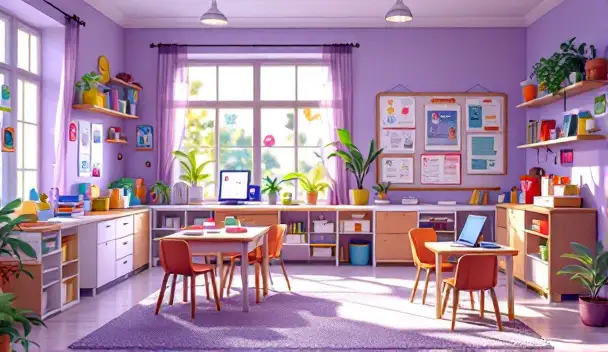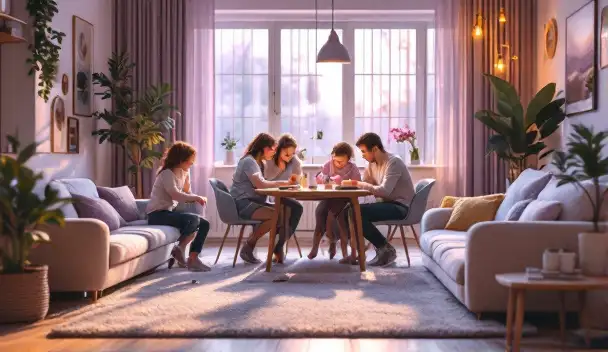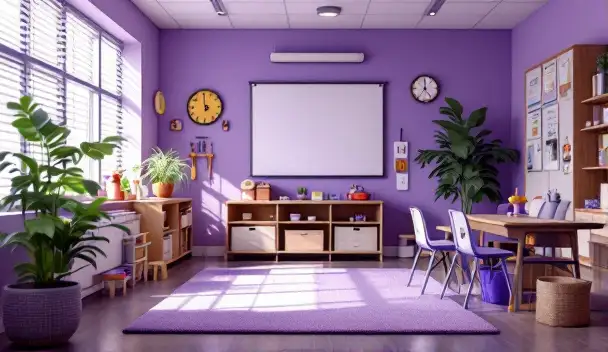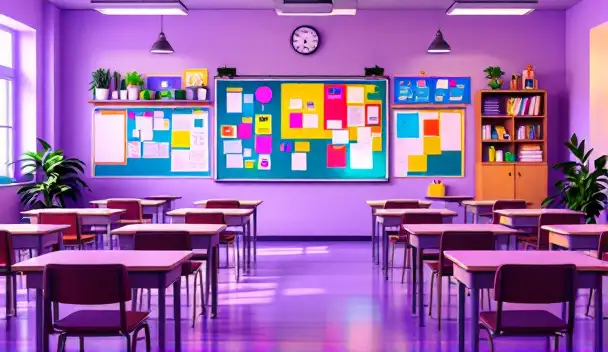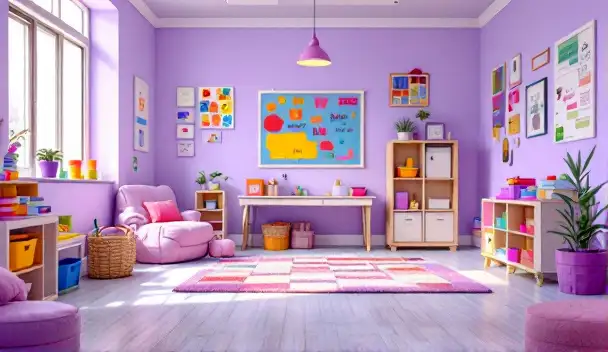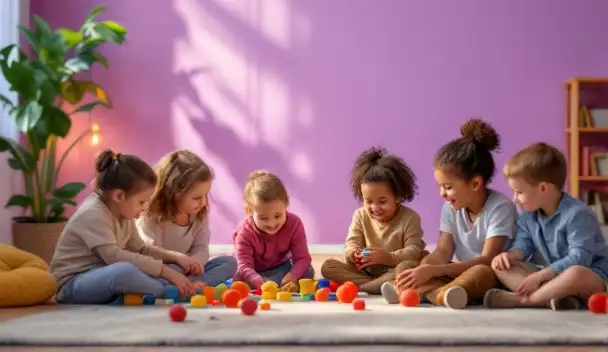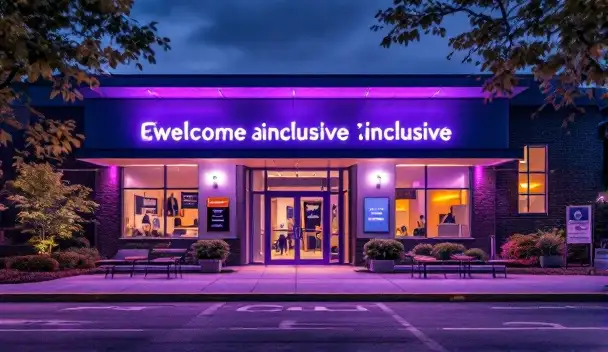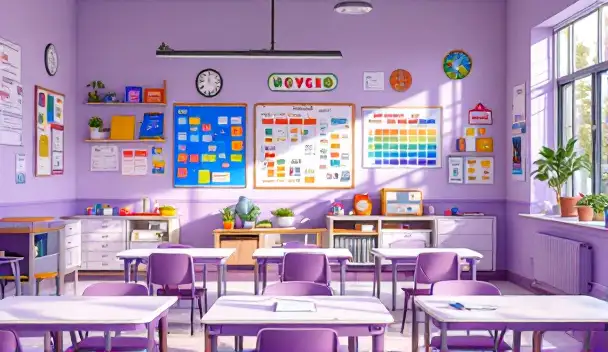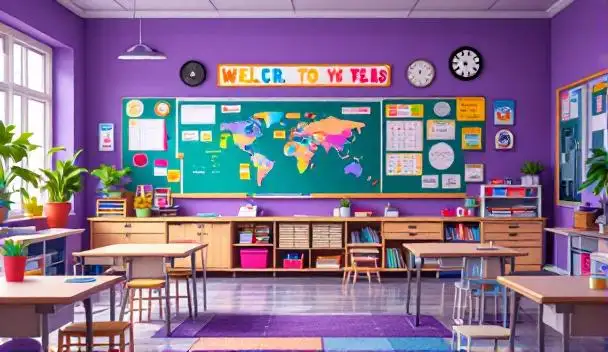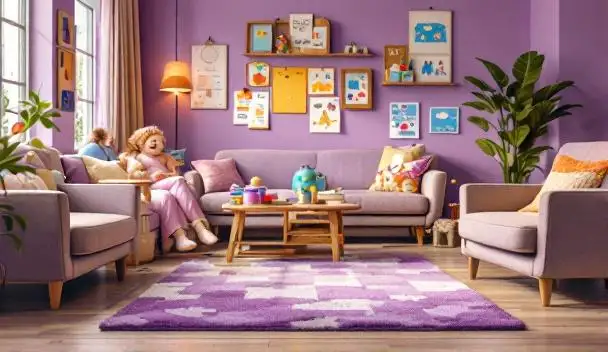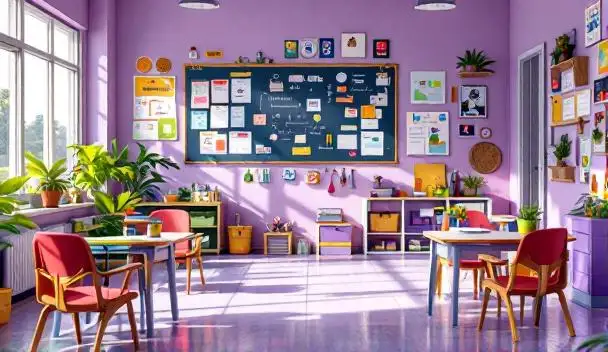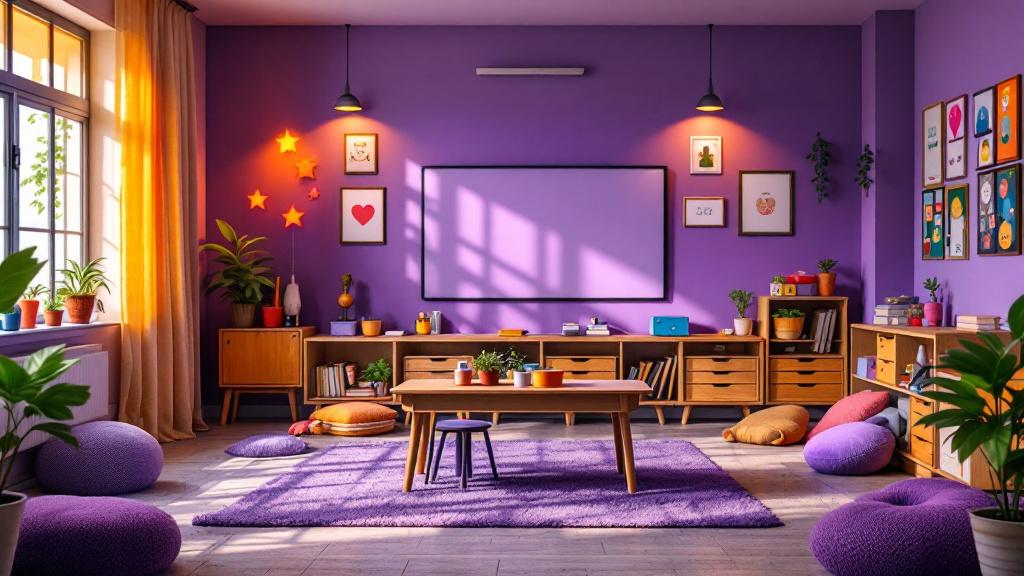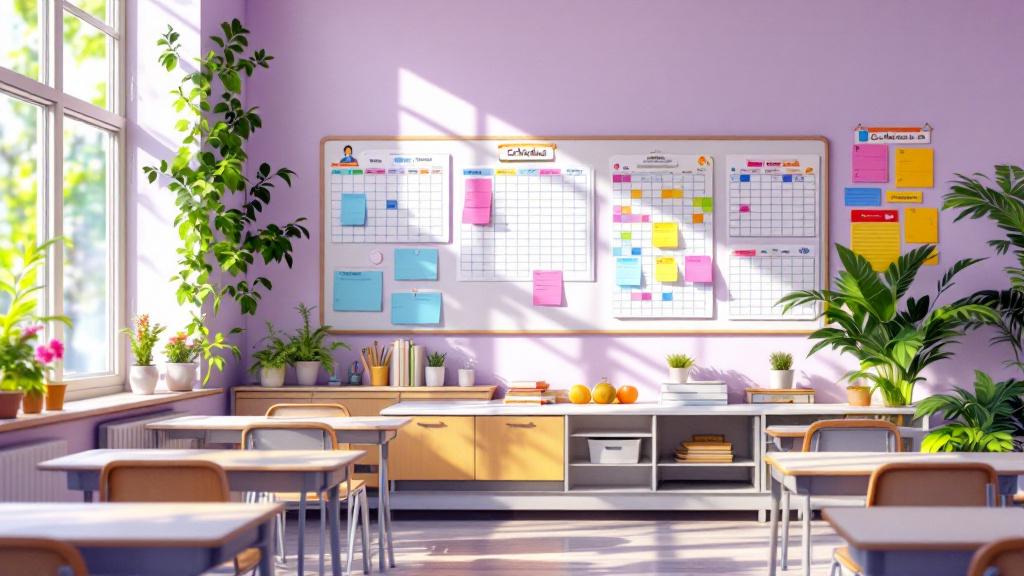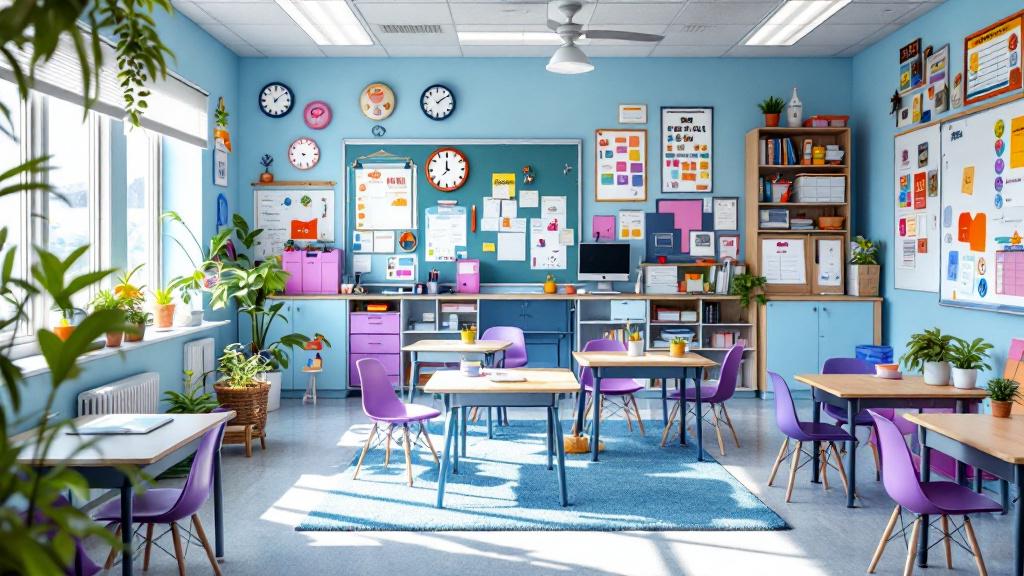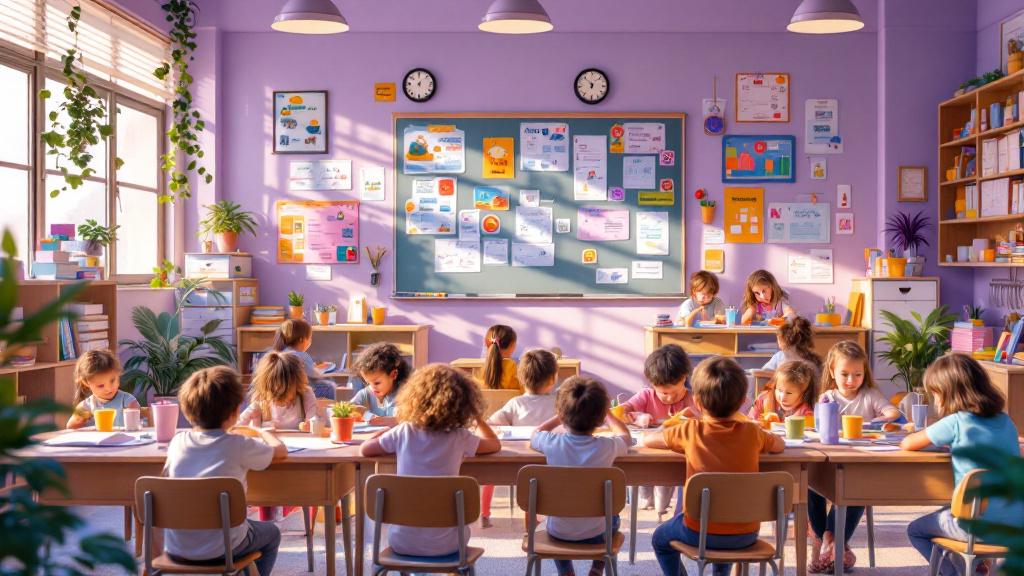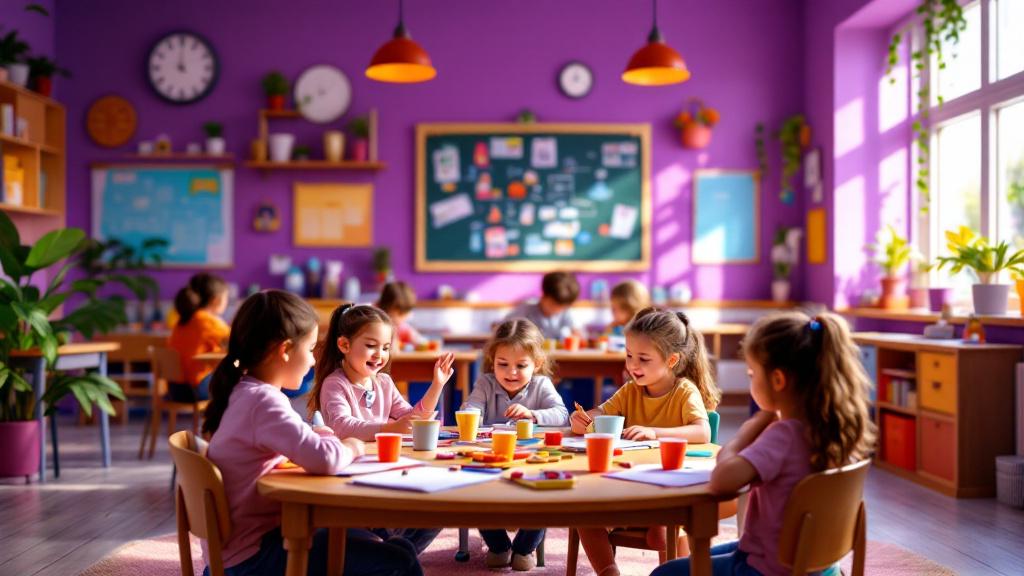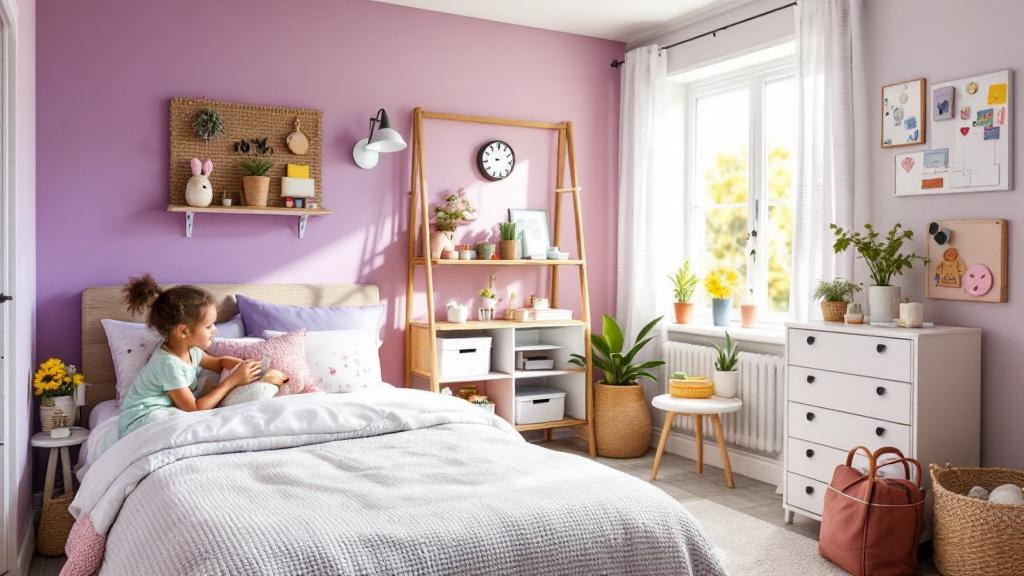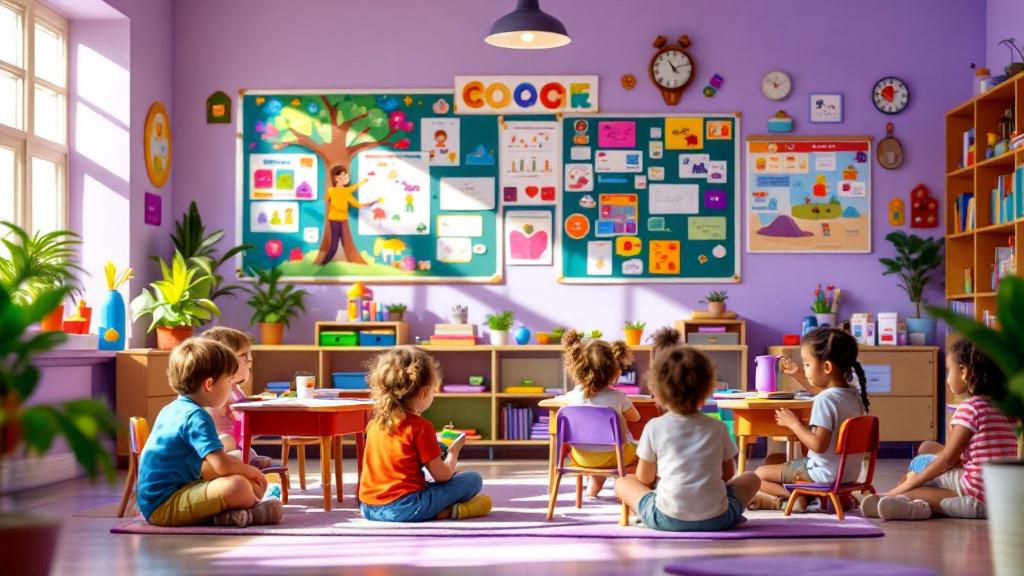Ensuring Continuity and Effectiveness in ABA Therapy
Reinforcing ABA therapy goals beyond clinical sessions is key to promoting enduring behavioral development and skill generalization. When strategies are thoughtfully implemented across home and community environments, children with autism spectrum disorder (ASD) can make meaningful progress that translates into daily life. This article explores best practices, collaborative methods, and innovative approaches for maintaining consistency, supporting skill transfer, and fostering ongoing growth outside of traditional therapy settings.
Establishing Consistent Routines and Visual Supports

What are the best practices for maintaining consistency of ABA goals outside clinical sessions?
Ensuring that ABA goals are consistent beyond the therapy setting is crucial for reinforcing skills and encouraging their generalization in daily life. One of the most effective strategies involves establishing structured routines and using visual supports.
Creating predictable environments with visual schedules and cues helps children anticipate upcoming activities and understand expectations. Visual tools such as picture schedules, charts, and social stories serve as visual reminders of routines and steps involved in daily tasks. These supports reduce anxiety about transitions and make learning more accessible.
Implementing consistent routines across various settings like home, school, and community ensures that children experience familiar cues and responses, strengthening their understanding and independence. For example, a visual schedule for morning routines, such as brushing teeth or getting dressed, can be used at home and replicated in other environments.
Parents and caregivers should work closely with therapists to align daily activities with ABA goals. Reinforcement strategies, like praise or preferred items, should be applied consistently whenever the child demonstrates desired behaviors. Immediate positive feedback is important to solidify learning.
Regular communication and collaboration between everyone involved—therapists, teachers, and family members—help monitor progress and make necessary adjustments. Sharing observations and strategies ensures everyone reinforces the same behaviors and avoids conflicting cues.
Practicing these routines in low-stakes settings like home helps children build confidence and skills that they can apply during outings or social interactions. This consistency ultimately fosters independence and long-term success in applying learned behaviors across all aspects of life.
In summary, maintaining ABA goals outside clinical settings relies on creating predictable, visual-supported environments, establishing steady routines, and ensuring open communication among all caregivers involved. These practices support the natural integration and reinforcement of skills, helping children achieve meaningful progress over time.
Using Natural Environment Teaching and Incidental Teaching for Skill Generalization
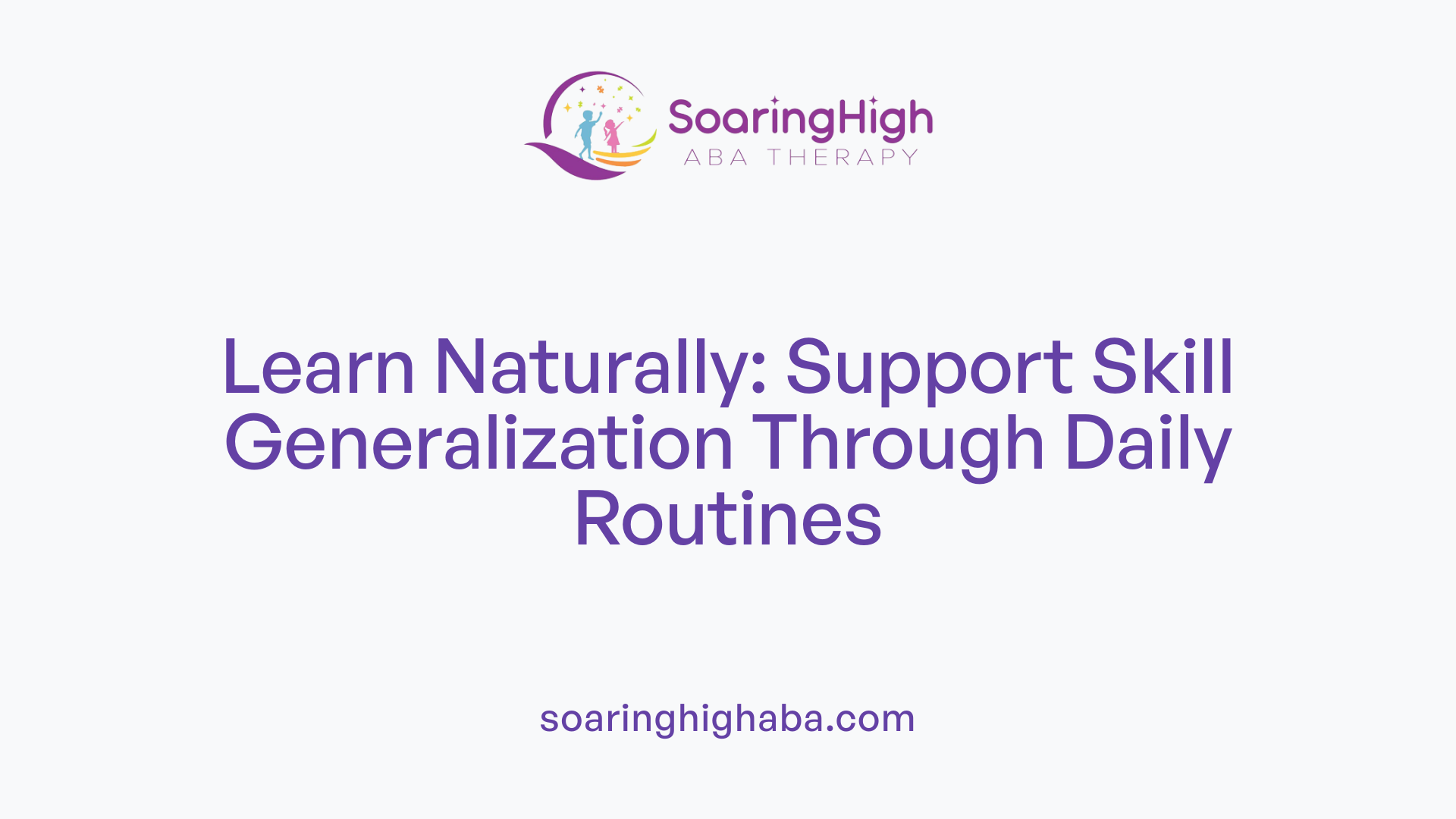
How can skill generalization be supported in home and community settings?
Ensuring that children with autism effectively transfer skills learned in therapy to real-world environments is a central goal of ABA intervention. One effective approach is the use of Natural Environment Teaching (NET), which emphasizes teaching functional skills within the context of daily routines and child-led activities.
Incorporating functional skills into natural routines involves embedding targeted behaviors into everyday tasks such as mealtime, grooming, play, or community outings. For example, teaching a child to request a toy during play or to ask for help during dressing activities helps make the skills meaningful and applicable.
Applying incidental teaching during daily activities means seizing spontaneous teaching moments that occur naturally throughout the child's day. During these interactions, therapists and caregivers can prompt and reinforce desired behaviors when the situation naturally arises — like asking for a snack at snack time or commenting on objects during errands. This fosters spontaneous language use and social interactions.
Fostering skill transfer through child-led interactions encourages children to take the initiative and engage in activities that interest them. By following the child's cues and interests, caregivers can create opportunities for practicing communication, social skills, and adaptive behaviors in motivating contexts.
Consistency across environments is crucial. All caregivers, whether at home, in the community, or at school, should collaborate to maintain similar routines and reinforcement strategies. This consistency helps children understand expectations and increases the likelihood that skills will be used across various settings.
Open communication and teamwork among families, therapists, teachers, and community providers are vital. Regular planning and sharing of strategies ensure that everyone reinforces similar behaviors, offering continuous support for skill generalization.
Personalizing strategies to each child's interests ensures higher engagement. For instance, if a child loves animals, incorporating animal-themed activities into routines can motivate participation and practice.
Research indicates that integrating targeted ABA techniques within everyday environments not only helps children acquire functional skills but also encourages independence and confidence.
Below is a summary table of strategies for supporting skill generalization:
| Strategy | Application | Benefits | Important Notes |
|---|---|---|---|
| Natural routines | Embed skills into daily activities | Functional, meaningful learning | Tailor routines to child's interests |
| Incidental teaching | Seize spontaneous opportunities | Spontaneous language and social use | Be prepared with cues and reinforcers |
| Child-led interactions | Follow child's cues and interests | Higher motivation, independence | Observe and adapt to child's focus |
| Consistent reinforcement | Use similar cues and rewards across settings | Reinforces behaviors | Communicate with all caregivers |
| Collaborate with families | Regular planning and feedback | Coherent learning environment | Share progress and strategies |
For more on implementing natural environment teaching strategies, consult resources with a focus on generalization strategies tailored for children with autism.
Fostering Collaboration and Clear Communication between Caregivers and Therapists
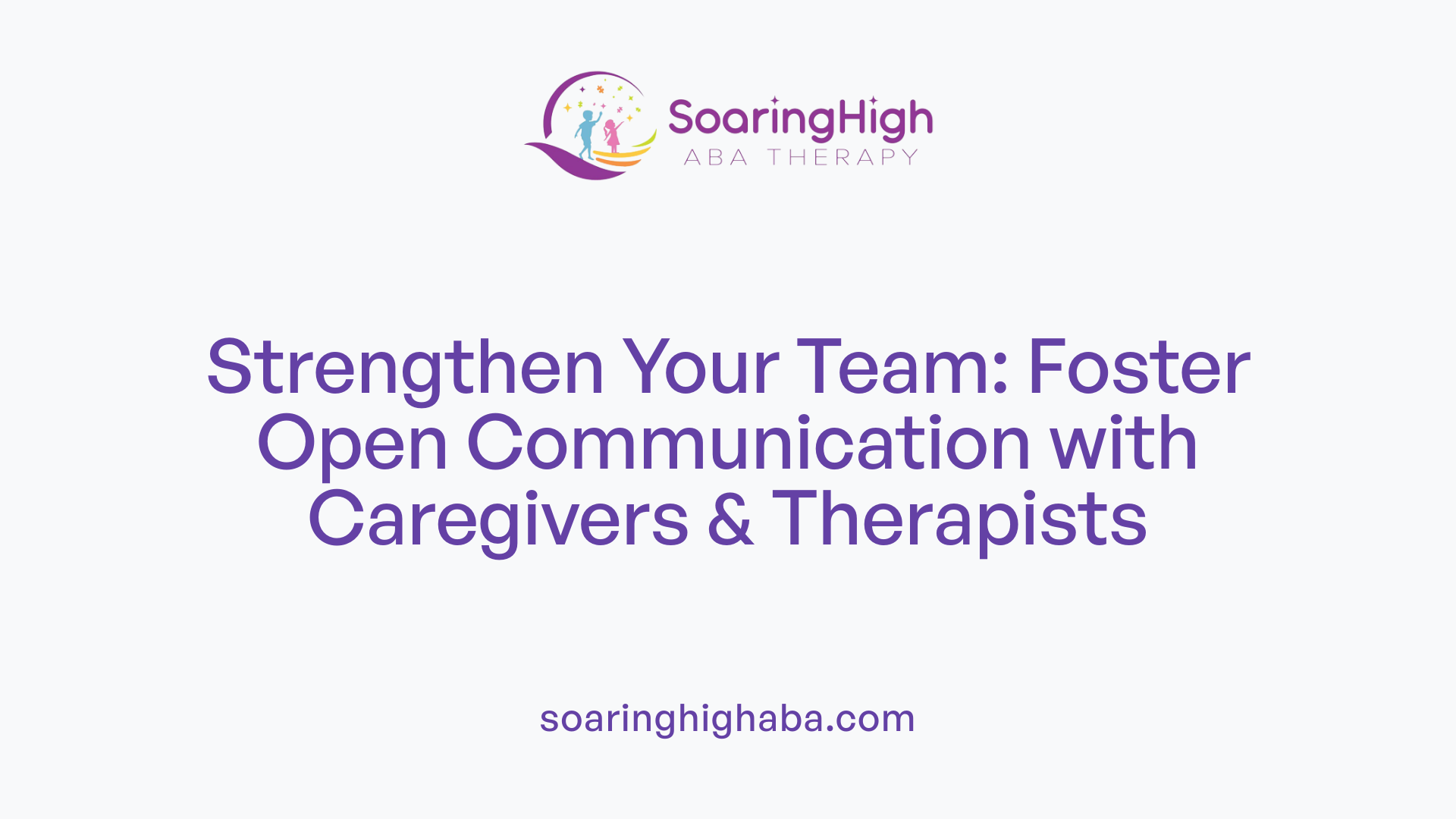
How can caregivers and therapists collaborate to reinforce ABA goals effectively?
Successful reinforcement of ABA goals relies heavily on a strong partnership between caregivers and therapists. Establishing shared goals and clear responsibilities from the outset creates a foundation for consistent and effective intervention.
Caregivers and therapists can enhance collaboration through ongoing dialogue, which allows for real-time adjustments and ensures that strategies remain tailored to the child's evolving needs. Regular meetings, whether in person or via telehealth, facilitate transparent communication, helping both parties stay aligned and motivated.
Training caregivers in reinforcement and data collection techniques is essential. When caregivers understand how to use positive reinforcement, implement behavior tracking, and apply strategies like visual supports and social stories, they become active participants in their child's progress.
A collaborative approach also involves cultural responsiveness, ensuring strategies are respectful and adaptable to each family's unique context. This cultural sensitivity fosters trust and promotes the consistent application of intervention plans.
Community-based programs and interdisciplinary teams enable the sharing of insights and resources, promoting holistic support for the child. These collaborations help in understanding how skills can be reinforced across various settings, like home, school, and community outings.
Moreover, regular data review and strategy evaluations help in identifying what works and what needs adjustment. This data-driven process supports informed decision-making and reinforces a sense of shared responsibility.
Finally, fostering teamwork involves conflict resolution skills, equitable workload sharing, and advocating for systemic support, resulting in a sustainable partnership that effectively promotes ABA goals.
| Aspect | Description | Additional Notes |
|---|---|---|
| Establishing Goals | Co-creating measurable and relevant objectives | SMART criteria (Specific, Measurable, Achievable, Relevant, Time-bound) |
| Caregiver Training | Teaching reinforcement, data collection, and behavior management | Enhances consistency and generalization |
| Communication | Regular meetings, updates, and feedback | Builds trust and responsiveness |
| Cultural Sensitivity | Adapting strategies to family values and norms | Ensures respectful, personalized support |
| Data Sharing | Reviewing progress and making adjustments | Keeps interventions aligned with child's development |
| Teamwork Practices | Conflict resolution, workload sharing, advocacy | Maintains long-term collaboration |
In summary, effective collaboration combines clear communication, joint planning, continuous training, and a commitment to shared goals. This integrated approach ensures that ABA strategies are reinforced consistently across all environments, ultimately supporting the child's growth and independence.
Strategies for Reinforcing Goals Across Multiple Environments
What are effective strategies for reinforcing ABA therapy goals across multiple environments?
Reinforcing ABA therapy goals consistently across different settings such as home, school, and community is vital for helping children generalize and maintain their skills. One of the most effective approaches is ensuring that reinforcement strategies and behavioral expectations are applied uniformly. This means that caregivers, educators, and community members all follow similar routines and use comparable cues and rewards.
Collaboration and open communication between all involved parties play a crucial role. Regular meetings and sharing progress data help coordinate efforts and adjust strategies as needed. This teamwork ensures everyone understands the child's goals and the best ways to support them.
Using visual supports, structured routines, and priming activities prepares children for transitions or new environments. Visual schedules, social stories, and role-playing introduce upcoming activities, reducing anxiety and building confidence.
Modeling appropriate behaviors consistently across settings helps reinforce learning. These demonstrations, coupled with positive reinforcement like praise or preferred items, encourage children to apply learned skills.
Data collection is essential for tracking progress and modifying interventions. Systematic observations help identify what strategies work best and where adjustments are needed.
Creating an inclusive environment that promotes peer acceptance and focuses on the child's individual strengths enhances engagement and skill retention.
In summary, the synergy of these strategies—shared routines, collaboration, visual supports, modeling, and data-driven adjustments—maximizes the likelihood that children will successfully transfer their skills across various natural settings, ultimately supporting their independence and social integration.
Supporting Behavioral Progress in Natural Settings
How do methods support behavioral progress in real-world environments?
Fostering behavioral improvement in everyday settings involves the use of various targeted strategies. Naturalistic teaching methods are essential, as they integrate skill development seamlessly into children’s daily routines and activities. This approach ensures that acquired skills are not only learned but also easily generalized across different environments, promoting independence and social competence.
Embedding skills into daily routines involves intentionally incorporating therapeutic goals into activities such as meal times, play, and household chores. For example, teaching a child to ask for help during play or to respond to requests during a shopping trip helps reinforce communication and social skills in authentic contexts.
Creating nurturing environments is crucial. These should be settings that reduce stress and avoid toxic stressors, fostering a sense of safety and support. When children are in environments that promote prosocial behavior—like sharing, cooperation, and empathy—they are more likely to develop positive behaviors naturally. Strategies such as positive reinforcement, modeling appropriate behavior, and social stories help shape these nurturing contexts.
Behavior assessment tools like ABC analysis—Examining antecedents, behaviors, and consequences—are vital in understanding and modifying behaviors. These tools help identify triggers, understand the function of behaviors, and develop specific intervention strategies. They form the backbone of data-driven decision-making in ABA programs.
Behavior change techniques such as goal setting, self-monitoring, and cognitive restructuring further support adjustment processes. Building self-efficacy and social support also play important roles in encouraging children and their caregivers to stay committed to behavioral goals.
Implementing Positive Behavior Support Systems (PBIS) within a multi-tiered framework provides a structured approach to promote and reinforce positive behaviors across different environments like schools, homes, and community settings.
Emerging technologies such as machine learning, remote sensing, and bio-loggers offer new ways to gather detailed data on natural behavior patterns. These insights facilitate personalized interventions and long-term progress tracking, ensuring that behavior support is both effective and adaptable.
Overall, integrating these methods creates a comprehensive support system that promotes sustainable behavioral improvements, helps children navigate their daily lives with confidence, and enhances their social and emotional well-being.
Promoting Continuous Skill Development Outside of Formal Therapy

What approaches promote stable and ongoing skill development outside of therapy sessions?
Continual skill development beyond structured therapy sessions hinges on integrating learned behaviors seamlessly into daily routines and environments. Consistent reinforcement of skills—such as positive praise, rewards, or preferred activities—encourages children to repeat and retain desired behaviors.
Involving family members and caregivers actively is essential. By equipping them with specific strategies, such as visual cues or choice-making, they can reinforce skills during everyday activities, fostering better generalization across settings like home, school, and community.
Personalized and adaptable plans that cater to each child's unique needs provide the flexibility necessary for ongoing success. For example, modifying routines or using visual supports during outings or chores helps tailor the approach, making skill retention more effective.
Using familiar environmental features, such as routines or visual schedules similar to those in therapy, supports smoother transfer of skills from clinical settings to real-world contexts.
Continual monitoring of progress through data collection allows for timely adjustments of strategies. This ongoing assessment ensures that skills are not only maintained but also built upon as children advance.
Overall, these integrated approaches help sustain developmental gains, enabling children to apply new skills confidently and independently in their everyday lives.
Planning, Tracking, and Adjusting ABA Goals in Different Environments

How should ABA goals be planned, tracked, and adjusted across different settings?
Effective ABA therapy relies on careful planning, ongoing monitoring, and flexible adjustment of goals tailored to each child's unique needs. The process begins with an in-depth assessment, such as a functional behavior assessment (FBA) or skills evaluation tools like VB-MAPP or ABLLS-R. These assessments help identify the child's strengths, challenges, and priorities, forming the foundation for personalized and meaningful goals.
Once needs are understood, therapists, parents, and educators collaborate to set clear, specific, and measurable objectives. These goals should be realistic yet challenging, focused on areas like communication, social skills, self-care, or behavior management. Using the SMART framework — ensuring goals are Specific, Measurable, Achievable, Relevant, and Time-bound — helps facilitate progress tracking and accountability.
Breaking down complex skills into smaller, manageable steps is essential. For example, teaching a child to brush teeth might start with picking up the toothbrush, then applying toothpaste, and finally brushing. This incremental approach makes learning less overwhelming and easier to reinforce.
Data collection plays a pivotal role in monitoring progress. During therapy sessions, therapists record specific behavior metrics, such as frequency or duration, to evaluate advancement toward goals. Regular review meetings—typically weekly or bi-weekly—allow for analyzing this data, recognizing patterns, and identifying any areas where the child may need more support.
Based on ongoing assessments, goals are refined or adapted to reflect the child's current progress. If a child is excelling, new, more challenging objectives might be introduced. Conversely, if progress stalls, goals can be scaled back or adjusted to better match the child's developmental pace.
Consistency across environments enhances the effectiveness of ABA strategies. Caregivers and educators are trained to implement reinforcement techniques and routines that support skill generalization — the transfer of learned behaviors from one setting to another.
Active caregiver involvement is vital for success. By using reinforcement strategies at home and in community settings — such as providing praise, preferred activities, or tangible rewards — children are more likely to adopt behaviors across different contexts. Visual supports and social stories can further aid in transitioning between routines or environments, reducing anxiety and resistance.
In summary, planning, tracking, and adjusting ABA goals requires a balanced combination of thorough assessment, clear goal-setting, meticulous data collection, and flexible modifications. This process ensures that therapy remains relevant and effective, ultimately promoting meaningful skill development that generalizes across various settings and daily activities.
Harnessing a Collaborative, Consistent Approach for Lasting Impact
Achieving sustained progress in ABA therapy requires a comprehensive, collaborative effort that bridges clinical strategies with everyday routines. By establishing consistent routines, leveraging natural teaching opportunities, fostering open communication among caregivers and professionals, and continuously monitoring and adjusting goals, children can effectively generalize and maintain important skills across home and community environments. Empowering families with the tools and knowledge to implement reinforcement strategies consistently and adapt interventions dynamically will lead to more meaningful, long-lasting behavioral improvements and greater independence for children with ASD. Through these integrated efforts, ABA can truly become a seamless part of a child's everyday life, supporting ongoing growth and development.
References
- In Home and Community Based ABA Services in Massachusetts
- How to Support ABA Therapy Over Summer Break
- Autism Treatment In Community Settings Archives - LeafWing Center
- How Parents Can Actively Participate in ABA Home Therapy Sessions
- How to Set ABA Goals: A Step-by-Step Guide for Success
- What Is ABA Therapy For Autism - Behavioral Framework
- Home based ABA therapy - Arise Autism Center
- What Is ABA Therapy? A Complete Guide for Parents and Caregivers












